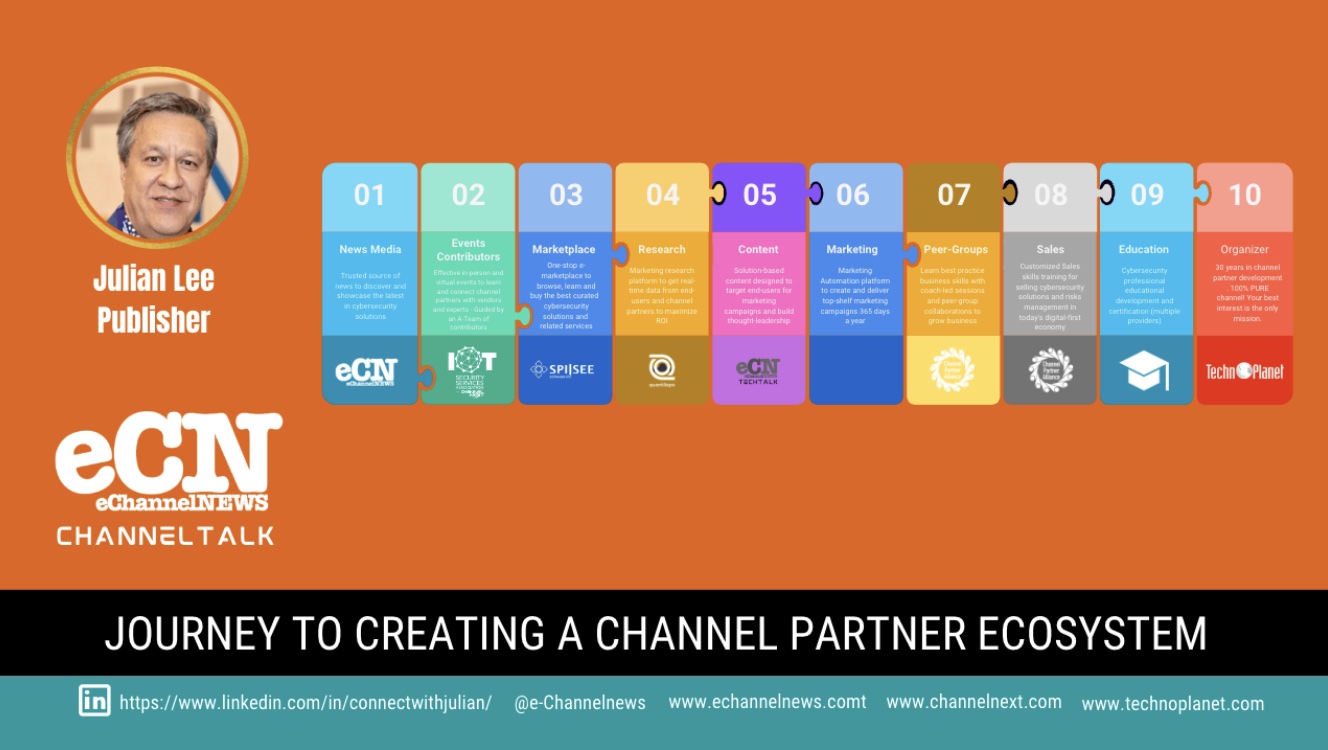Automating interactions with channel partners is a standard business practice, mostly driven by the sales and marketing departments. Many PRM solutions are available to assist vendors in successfully automating numerous processes with their partners. However, automation by itself won’t produce the optimum results for sustainable channel development in today’s digital-first economy.
There are about 500,000 channel partners around the globe yet to be invited to your party!
To increase predictability and sustainability in business valuation and growth, it is evident that the majority of vendors are or will be fully committed to a subscription/consumption model (including hardware vendors). Poke around and you will see lots of analyst opinions and actual examples from several vendors. Check out Jay McBain’s content feeds for loads of data to hammer home this message. This business model is already well-integrated into the majority of the channel community. SaaS/Cloud vendors and Managed Service Providers do it every day.
The subscription/consumption model requires manufacturers to modify their channel programs so that rewards are more aligned with partner actions rather than just evergreen payouts for subscriptions that have already been sold. Failure to do so would result in partners who gradually perform less work as they develop a strong clientele and settle for collecting the recurring monthly payments.
It is also important to consider the significant inflation and rising interest rates that have since made everything more costly. The “smell” of a recession in the air is already affecting consumer confidence. The need for increased meaning and compensation among workers is heating up the competition for talent. Employers incur higher costs as a result, which they must pass through to customers. If they cannot hire talent then they will have to do more with less people (and automation). Who knows how the ongoing war, supply chain shortages and the evolving pandemic will continue to impact the economy. Whatever it will be, it cannot be positive. We are already seeing air travel disrupted like never before and try to rent a car. Even more worrisome is the incredible increase in food prices to consumers.
All these factors and more are making digital transformation and automation mission-critical to just about every business.
When building and automating your partner ecosystem with these considerations in mind, there are essentially three camps to take into account:
- Build your own ecosystem using a third-party platform.
- Plug into a multi-vendor partner ecosystem platform.
- Develop your own in-house solution.
Each choice has benefits and drawbacks. Although you could develop your own ecosystem platform internally using your CRM, this is by far the most difficult and expensive option (3). As such, we won’t explore this option because it is not a realistic choice for the vast majority of vendors.
Build your own ecosystem automation using a third-party platform.
A FEW PROS
There are currently many “affordable” third-party PRM platforms available that are fairly easy to spin up. Most PRMs are capable of handling fundamental tasks such as deal registration, search, content management, support, communications, promotions, MDF and incentives. Some do good job of managing the relationships and are improving. Better user interfaces are now making it much easier to manage.
A FEW CONS
Most PRMs are not able to handle the actual subscription and consumption transactions. For this, the vendor must use a different system for configuration, provisioning, management, billing, and maintenance. Channel partners may find it challenging to handle this especially if their customer’s consumption requirements vary (more so in a volatile market). Many SaaS vendors are offering multi-tenant management dashboards to help partners manage this task. However, the inefficiencies in these tools and processes are creating many instances of not billing, delayed billing, under-charging, and overcharging. It’s also crucial to assist your partners in effectively co-promoting your product to their customers, but again, most PRMs perform subpar marketing. It will also be more difficult to convince your partners to use your portal if it is a silo, as they already struggle to work with so many other vendor sites. Whatever automation advantage you may have today will disappear tomorrow as a result of what PRM providers learn or build for you will likely be implemented for other clients.
Plug into a multi-vendor partner automation ecosystem.
A FEW PROS
A strong API connection will make it simple for any vendor to connect to numerous multi-vendor partner ecosystems (and marketplaces). Within each ecosystem, it can be easier to find and bring on new partners. Partners can access numerous vendors with a single sign-on. Partners are able to register and quote multi-vendor deals. Within the same platform, partners can discover complementary solutions rapidly. Vendors could literally delete their PRM and pour their content directly into the platform.
A FEW CONS (FOR VENDORS).
Given that several vendors are on the same platform, partner automation and management won’t be a significant competitive advantage. Partners can be easily nabbed by rivals who are on the same platform (although there will be some safeguards to curtail this from happening). Finding competitive solutions for partners will be simple with the appropriate categorizations and tags (Keep in mind that while these seem to be “CONS” for vendors, partners see these as “PROS”).
Some of these multi-vendor platforms will also allow for private labeling by partners. This means that a partner can quickly spin up a customer-facing instance of the same platform to have an e-commerce empowered marketplace to promote and transact directly and seamlessly with their end-users.
Consider this future scenario…
There are 50 platforms available for multi-vendor channel partner ecosystems. Each platform has a unique combination of vendors and features (maybe some ecosystems target certain vertical markets). Through an API, thousands of vendors are connected to several platforms to feed all the information required to conduct business with any partner. Each partner is using one of the multi-vendor platforms and can simply click to activate the vendors they want to sell.
The partner now has access to a single sign-on platform with all of the vendors they want to sell and manage. The partner can easily add a new vendor to their portfolio by just clicking a button. Similar to adding a vendor, eliminating one only requires clicking the same button. Partners can also add their own value-add solutions and managed services.
NOTE: Having a customer on a recurring subscription is not a guarantee that will remain a forever client. Sun-setting one solution and spinning up another is becoming easier, vendors and partners must now continue to find ways to retain users month after month
It seems likely that all of these systems will eventually have about the same functionality. As such, the scale of the partner network, the expertise of the partners, and the potency of its marketing capabilities may be the largest differentiators.
Eventually, all PRMs providers, channel management and industry watchdogs will have no choice but to embrace multi-vendor camps as well as end-user facing marketplaces.
Looking for proof today?
Consider SaaS distributors. A selection of vendors have been integrated within their platform. They are essentially the “API” between partners and vendors. They choose which vendors to include or exclude. It’s not difficult to see how a partner might effectively leverage such a platform to conduct business with numerous vendors. The huge success of these SaaS/Cloud distributors clearly demonstrate that a multi-vendor ecosystem is a viable solution.
Another example is managed services platforms like PSAs have already integrated several Cloud solutions and third-party tools.
Additionally, there are numerous instances of multi-vendor integrated systems already being employed by large solution providers.
Again, this idea is not new. Clearly having a platform that aggregates and manages many vendors and services is a powerful competitive advantage. The challenge is making the platform affordable and easy to manage so any channel partner can get into the game.
API is the key to all channel and business automation platforms. A recent report from Cloudflare claims that over half of all Internet traffic is a result of API queries and growing twice as fast as other Internet traffic (Other reports show API traffic at 80%). I do not know what the actual number is, but it’s pretty high!
Whether we realize it or not, we all utilize APIs on a daily basis. In order to interface with partner ecosystems and marketplaces all vendors will eventually be required to use an API.
We are keeping a close eye on a number of the platforms on this roadmap. We are also exploring various plug-ins that will improve the efficiency and effectiveness of multi-vendor platforms for both partners and vendors.





